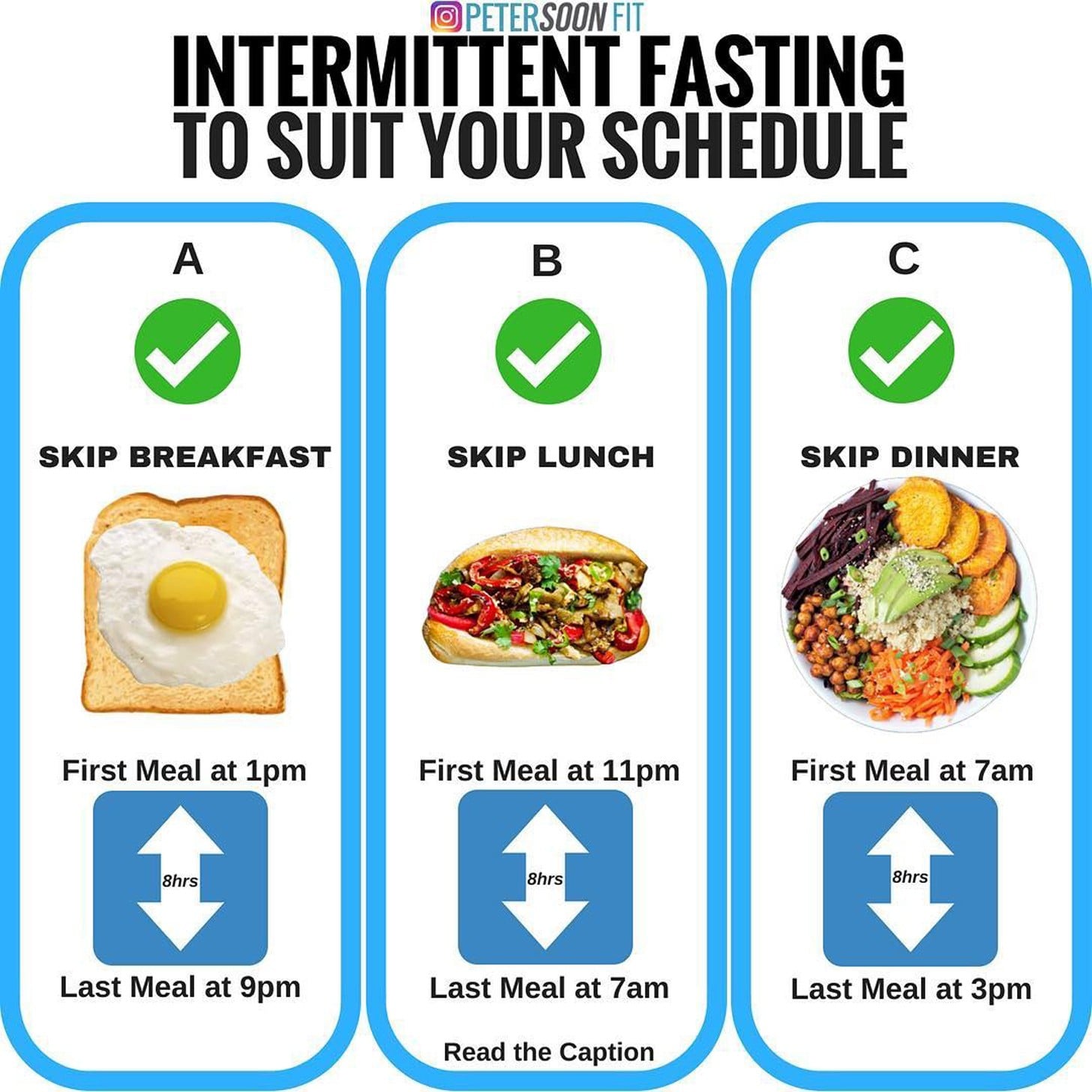Losing weight seems to have a common theme: restriction. You have to say no to carbs, or sugar, or grains, or alcohol, or oil, or nuts, or pizza, or fruit, or . . . fun! I mean, what kind of life is that? No wonder diets fail and people end up regaining the weight back. It’s just not sustainable.
This is where intermittent fasting (IF) comes into play. You don’t have to restrict what you eat, you just pay attention to when. How does IF help with weight loss? Fasting expert Jason Fung, MD, a nephrologist (kidney specialist) and author of The Complete Guide to Fasting, told POPSUGAR that fasting lowers insulin levels, allowing your body to tap into fat stores for fuel.
There are so many different methods of IF, and for newbie fasters, many of them can seem too extreme or too strict. The method that’s best for beginners is 12:12, meaning you eat for 12 hours of the day and fast for the other 12
“Fit the fasting into your life schedule, not the other way around, otherwise you’ll never be able to stick to it in the long term,” Dr. Fung explained. So eating 7:30 a.m. until 7:30 p.m. every day might work for you, or you might prefer eating later, with a 10 a.m. to 10 p.m. eating window. 12:12 intermittent fasting is easy to incorporate into your schedule because it’s consistent every day, and you can eat three regular-timed meals.
People have weight-loss success with intermittent fasting because it’s a method of eating they can sustain for their entire life. Most people who do IF don’t count calories or macros because they’re eating in such a short window, so it can actually make weight loss effortless and less tedious. It allows followers the freedom to eat the foods they want, eat larger portions, and feel more emotionally and physically satisfied.
Many people have weight-loss success with 12:12, but if you find that you’ve hit a weight-loss plateau, or you tend to overeat in that 12-hour period, Dr. Fung said you can simply increase the proportion of time you spend fasting, doing 14:10, then moving up to 16:8, where you eat from noon until 8 p.m. And eventually, you may want to try 18:6, where you eat from noon until 6 p.m.
The beauty of intermittent fasting is that it’s flexible and sustainable. You choose the method that fits into your life and your schedule. You can shift your eating window if you have a late party or a special breakfast. “If you have an important social event, then you may skip that day’s fast and do it the next day,” Dr Fung said.
Intermittent fasting not only helps people lose weight, especially belly fat, but doing IF also improves digestion and reduces bloating, improves mental clarity and energy levels, can prevent disease, helps you sleep better, and saves you time and money. It can help those who tend to overeat with late-night snacking, and fasting can actually decrease hunger so you feel more at peace with food, especially if you’ve had bad experiences with dieting in the past.
If you’re ready to try IF, consult with your doctor first and be sure to avoid these mistakes such as eating too much or not eating enough. Start off easy, listen to your body, and know that you may experience headaches, fatigue, or hunger in the first week or so as your body adjusts to this new eating schedule. Within a few weeks to a month, you’ll be sure to notice a change in your body and mind, and the only thing you’ll regret is that you didn’t start doing intermittent fasting sooner!
Source: https://www.popsugar.com/fitness/What-Intermittent-Fasting-Method-Best-Beginners-45305336
Disclaimer: All information, data and material has been sourced from multiple authors and is for general information and educational purposes only and are not intended to replace the advice of your treating doctor.
The views and nutritional advice expressed are not intended to be a substitute for conventional medical service. If you have a severe medical condition or health concern, see your physician.





